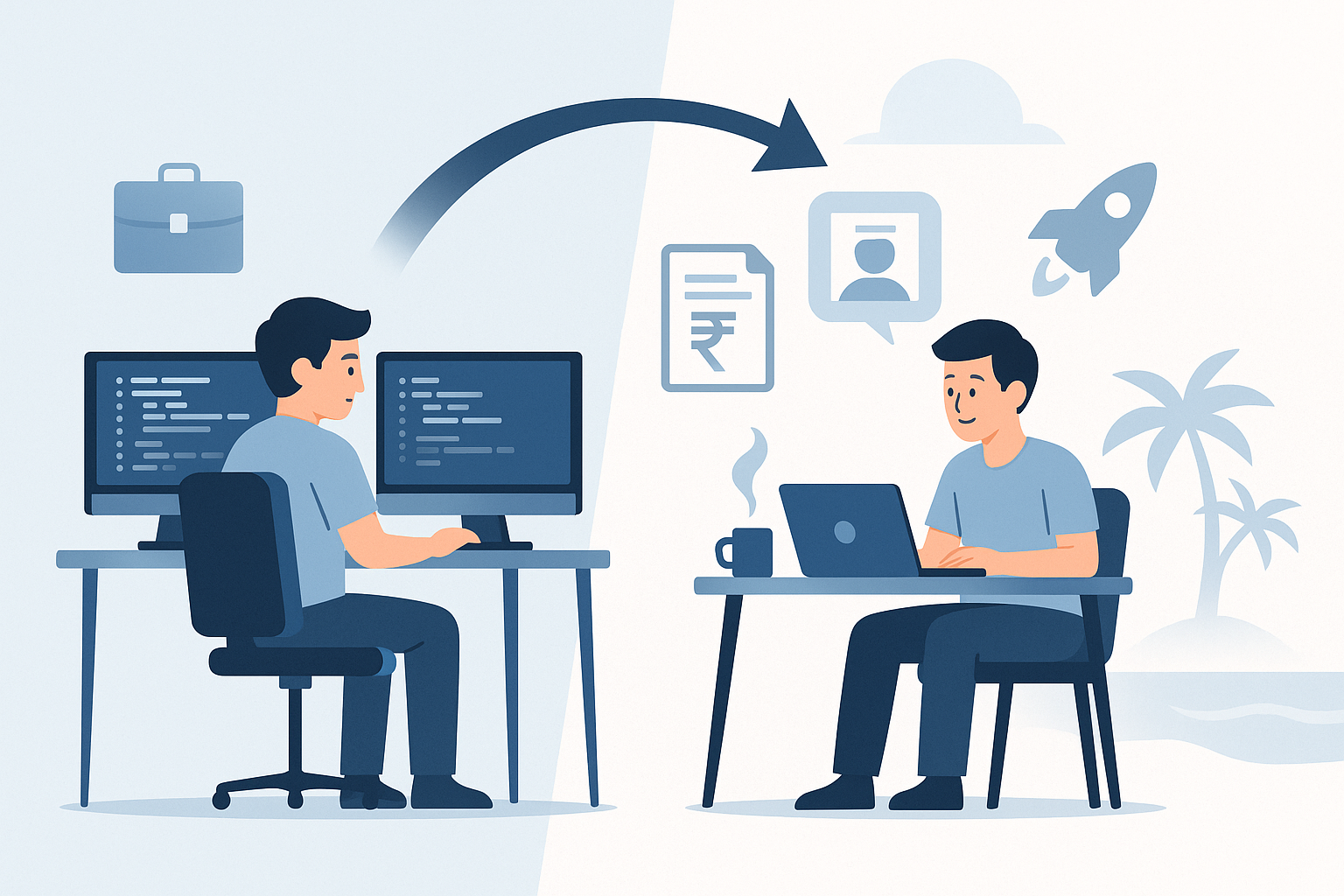In today’s ever-evolving tech landscape, freelancing has emerged as a viable and often desirable career path for experienced developers seeking independence, flexibility, and higher income potential. If you’ve spent years honing your development skills in full-time roles, you already possess a powerful foundation. But transitioning to freelancing—especially with financial or personal liabilities—requires a thoughtful strategy.
In this comprehensive guide, we’ll explore how to start your freelancing journey, manage liabilities, scale sustainably, and even open your own office when the time is right.
Why Consider Freelancing?
Many developers choose freelancing for:
- Autonomy: Freedom to choose clients, projects, and schedules.
- Income Potential: Rates can often surpass salaried jobs.
- Work-Life Balance: Flexibility to work from anywhere.
- Diverse Opportunities: Exposure to varied tech stacks, industries, and challenges.
But while the benefits are clear, the transition isn’t always easy—especially if you’re juggling financial obligations, family responsibilities, or a lack of business experience.
Phase 1: Self-Assessment and Goal Setting
Before diving in, take stock of your situation.
Ask Yourself:
- Do I want to freelance full-time or start on the side?
- What services can I confidently offer right now?
- What are my short-term and long-term goals?
- Do I have liabilities (EMIs, dependents, insurance) that require stable income?
Having clarity on these questions will help shape your path.
Scenario A: With Liabilities – The Strategic Shift
If you have home loans, a family to support, or monthly financial commitments, consider a soft transition:
1. Start Part-Time
Begin freelancing while still employed. Use weekends or after-work hours to:
- Build a portfolio.
- Gain client testimonials.
- Understand client management, invoicing, and taxes.
2. Emergency Fund
Save at least 6–12 months of living expenses. This buffer will help reduce pressure during dry months.
3. Target Retainer Clients
Seek long-term contracts instead of one-off gigs. Retainer clients ensure predictable income, helping you manage liabilities.
4. Simplify Your Lifestyle
Before the transition, reduce unnecessary expenses. The leaner your cost structure, the more breathing room you’ll have during the initial freelancing phase.
Scenario B: No Liabilities – The Agile Pivot
If you’re debt-free and without major obligations, you’re in an ideal position to take risks.
1. Go Full-Time Immediately
With no strings attached, you can dedicate full focus to building your freelance brand, acquiring clients, and scaling quickly.
2. Experiment and Niche Down
Test different niches—React Native apps, MERN stack dashboards, AI-based tools—before choosing one that aligns with your interests and market demand.
3. Invest in Branding
Launch a website, build a professional LinkedIn presence, and showcase your projects on GitHub and Behance. Your online brand is your new resume.
Phase 2: Setting Up Your Freelance Business
Regardless of your scenario, you’ll need a strong foundation:
1. Define Your Services
Clearly articulate what you offer:
- Web development (React, Angular, Node.js)
- AI integrations (TensorFlow, NLP, ChatGPT APIs)
- API development and DevOps
- UI/UX enhancements
2. Build a Portfolio
Use previous projects (with permission), open-source contributions, or create mock projects to demonstrate expertise.
3. Create Freelance Profiles
Register on platforms like:
- Upwork
- Toptal
- Freelancer
- Fiverr
- LinkedIn (as a service provider)
4. Set Your Pricing Strategy
Base your rates on:
- Market benchmarks
- Your experience
- Complexity of services
Start with competitive but sustainable rates—avoid undercharging just to win clients.
Phase 3: Marketing and Client Acquisition
1. Leverage Your Network
Inform old colleagues, LinkedIn connections, and friends that you’re now freelancing. Referrals are gold.
2. Cold Outreach
Identify potential businesses who could use your services and pitch personalized solutions via email or LinkedIn.
3. Create Content
Start a technical blog, YouTube channel, or podcast. Share tutorials, experiences, and case studies to build trust and visibility.
4. Collect Testimonials
After every project, request feedback and permission to showcase your work publicly. These testimonials help build credibility.
Phase 4: Scaling Up & Hiring Support
Once you hit consistent income and workflow:
1. Hire Support
- Virtual assistants
- Junior developers
- Designers
Delegate small tasks so you can focus on client relations and high-level development.
2. Implement Systems
Use tools like:
- Trello / Asana for project management
- Notion for documentation
- Wave / QuickBooks for accounting
- Calendly for meetings
3. Create Packages
Productize your services (e.g., “Landing Page in 5 Days”) to standardize offerings and save time.
Phase 5: Opening Your Own Office
Once your freelance brand grows, and you’ve built a team, you may consider launching an office.
When Is the Right Time?
- You’re handling more projects than you can manage alone.
- You want to transition into an agency model.
- You prefer a hybrid or in-office team culture.
Initial Office Setup:
- Start small: coworking spaces or shared offices.
- Prioritize location accessibility and high-speed internet.
- Hire full-time staff or build a contract-based team.
Branding and Legal:
- Register your company.
- Get a GST number (if in India).
- Draft service agreements and NDAs.
An office adds credibility, attracts bigger clients, and prepares you for enterprise-level projects.
Freelancing is not just a career change—it’s a mindset shift. It requires adaptability, resilience, and a willingness to wear multiple hats. Whether you’re navigating the journey with liabilities or flying solo with flexibility, success comes from clarity, consistency, and community.
With your years of development experience, you already have the core asset clients need—technical excellence. Now it’s about packaging, marketing, and delivering it independently.
Bonus: Checklist for Developers Transitioning to Freelancing
- ✅ Decide between part-time or full-time freelancing
- ✅ Set up an emergency fund (if needed)
- ✅ Identify and define your service offerings
- ✅ Build a personal website and GitHub portfolio
- ✅ Register on freelance marketplaces
- ✅ Set up accounting and invoicing tools
- ✅ Start building your personal brand through content
- ✅ Set SMART goals for income and client growth
- ✅ Plan your long-term vision (e.g., opening an office)






![Mobile Phone Brands with Country, Top Indian mobile brands to buy [2025]](https://seoinfotech.com/wp-content/uploads/2021/06/mobile-e1592558341853-300x110.png)
